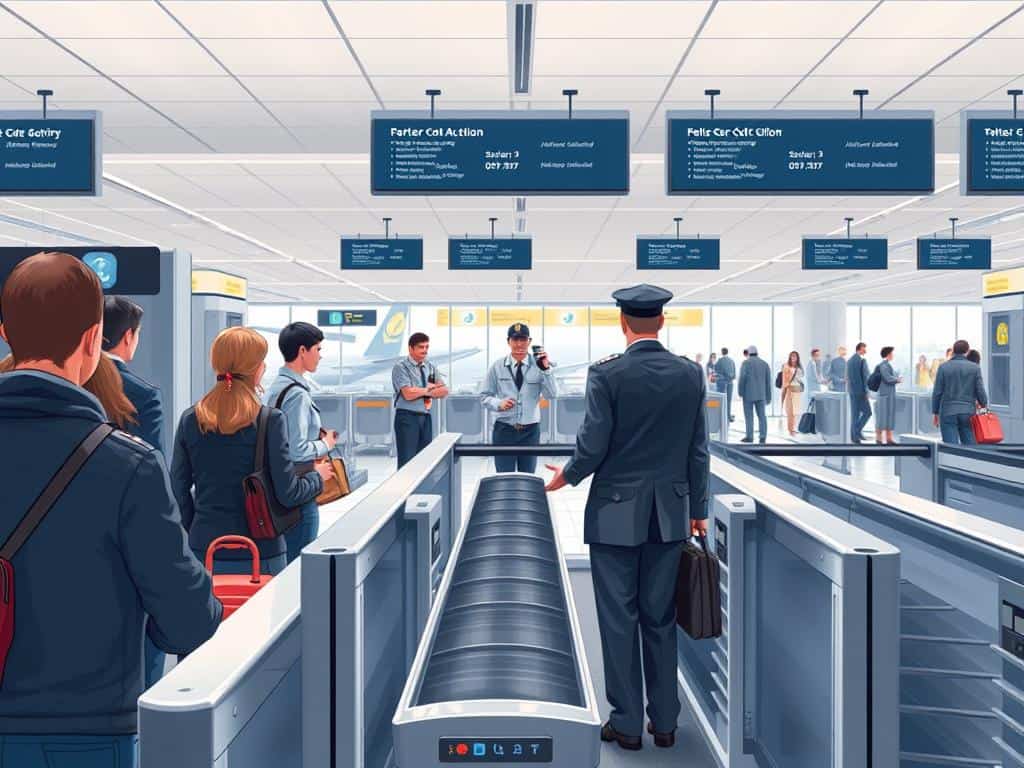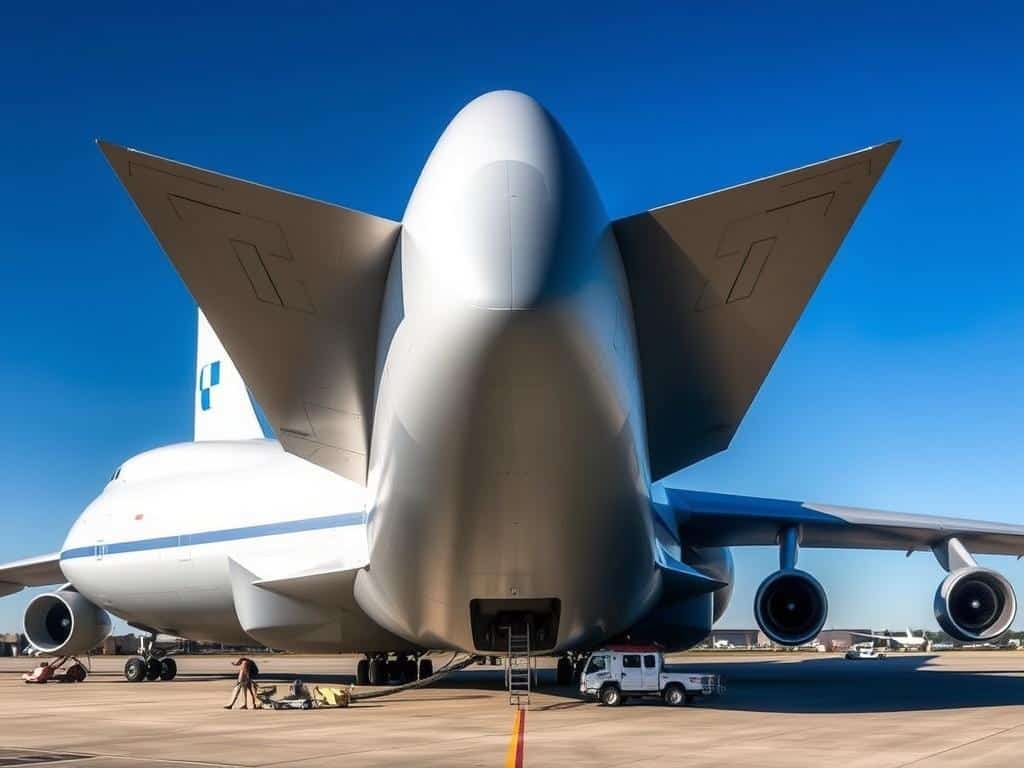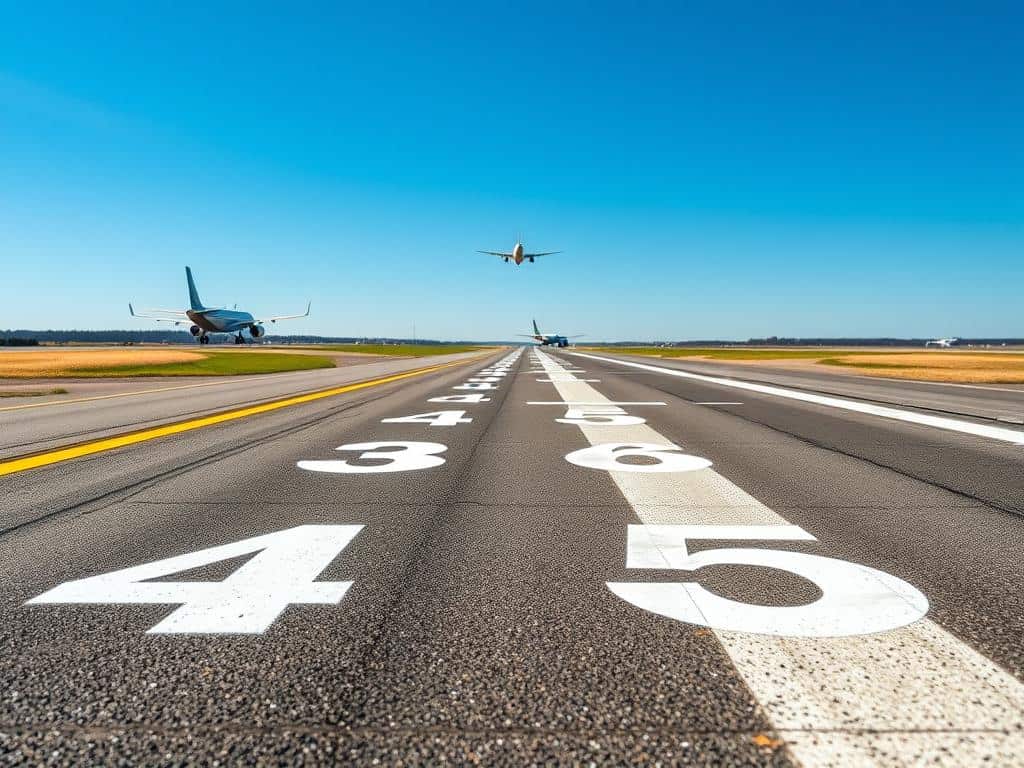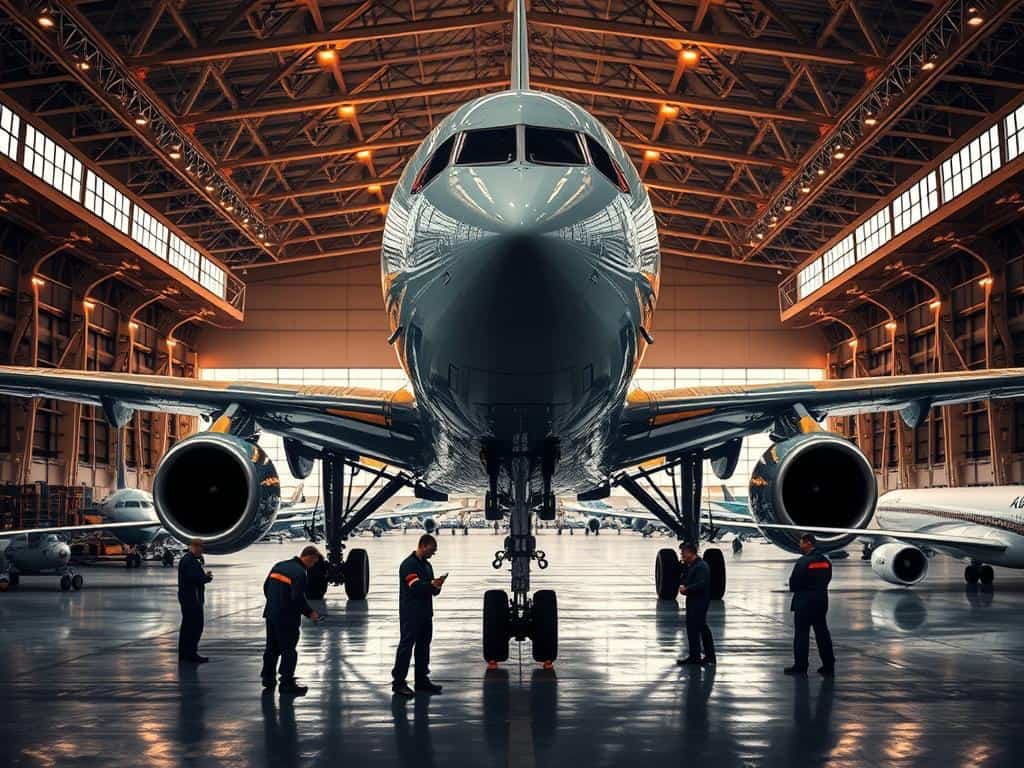As I head to the airport, I feel both excitement and worry. Traveling is something I love, but airport security can be a hassle. There are hidden rules and small details that can make a big difference.
In a world where safety is key, I’ve found some tips that change how I travel. These secrets help me understand TSA rules better and make my trips more fun. Here are five hidden secrets to make your next trip better.
Key Takeaways
- Understanding airport security can alleviate travel stress.
- Many airports provide complimentary WiFi for travelers.
- Reusable water refill stations can save money on bottled water.
- TSA PreCheck allows for expedited security checks.
- Airport currency exchange rates may lead to higher costs.
The Unexpected Role of Gender in Airport Security
Gender and airport security are closely linked, affecting travelers, mainly during TSA screenings. New options like “U” for undisclosed and “X” for unspecified by airlines show growing awareness of diverse identities. This change is a big step towards understanding gender’s role in security.
How Gender Identification Impacts Screenings
Choosing gender at TSA screenings can change the security process. TSA agents use a binary system with AIT scanners, picking “male” or “female”. If the gender doesn’t match, it might trigger extra checks.
This can be uncomfortable, mainly for transgender travelers. They might face manual pat-downs, causing emotional and physical stress.
The Effect of Full Body Scans
Full body scans raise privacy and comfort concerns. The need for clear gender classification can upset those whose gender isn’t obvious. These scans aim for safety but can unfairly target transgender and nonbinary people.
Groups like the National Center for Transgender Equality help protect privacy. They ensure no one is forced to talk about prosthetics during screenings. It’s important to make airport security more inclusive, considering the complex issues of gender and security.
Real-Time Feedback Mechanisms in Airport Restrooms
Travelers often have mixed feelings about airport restrooms, mainly about cleanliness. Many airports now focus on this by using real-time feedback systems. For example, New York City airports use technology to let passengers share their thoughts right after using the restroom. This feedback is key to keeping restrooms clean.
Smart restroom systems use different technologies to track usage, alert cleaning teams, and analyze maintenance needs. This approach not only keeps restrooms clean but also helps staff manage their work better, even when it’s busy. Keeping restrooms clean is essential for a good travel experience.
Many travelers use these systems to give positive feedback, showing they appreciate the efforts made. Quick responses to feedback can turn a bad experience into a good one, making travelers happier. In fact, 62% of travelers consider airport experiences important for their overall satisfaction. Using new restroom technologies and sharing safety tips can make travel safer and more comfortable.
Insights into TSA Behavior Inspection Techniques
The TSA uses special methods called TSA behavior inspection to make airports safer. They look at how people talk during screenings. This helps them see if someone seems nervous or uncomfortable, which might mean trouble.
Knowing about these talks is important for everyone. It helps keep everyone safe while traveling.
Understanding the Subtlety of Airport Conversations
Security talks are key in spotting threats at airports. Agents might talk to passengers about simple things. But these chats are actually to see if someone seems worried or lying.
This way of checking is very good. It’s much better than just picking people at random.
How Agents Assess Passenger Behavior
Agents use clear signs to judge people fairly. This way, they don’t make mistakes based on how they feel. It’s good for travelers to know this.
Learning about TSA rules helps everyone. It makes security checks go smoother and safer for all.
Airport Security Insights and Tips for Travelers
Traveling can be easy if I follow some key airport security tips. I often wonder how early I should arrive at the airport. While many say to arrive two hours early for domestic flights and three for international, it’s not always needed.
By knowing my airport’s usual wait times, I can plan better. This helps me avoid sitting around too long.
Security Lines: Do You Really Need to Arrive Early?
Many think long security waits are a must. To beat this, I check in online and prepare my carry-on items early. I also make sure my liquids are under 100ml each to avoid delays.
Understanding my airport’s layout and using apps like Hoi for flight tracking helps. This keeps me on schedule and stress-free.
How to Navigate TSA Security Like a Pro
Effective TSA security navigation means being prepared and knowing what to expect. Keeping my ID and boarding passes easy to find saves time. I use a special pocket in my carry-on for these.
Cooperating with TSA agents is key. Being ready to turn on electronics when asked prevents delays. Simple steps like wearing easy-to-remove clothes and using packing cubes make my journey smoother and faster.

Conclusion
Understanding airport security can make my travel better. Over the last 60 years, security tech has grown a lot. Now, we have advanced biometrics to keep us safe.
Learning about gender roles in screenings and the TSA’s methods is helpful. It gives me tips for easier travel. This knowledge helps me feel more confident when I fly.
Today, safety and efficiency are key. Being prepared can make flying less stressful. Knowing about airport security helps me enjoy my trips more. It lets me focus on the fun that awaits me.



